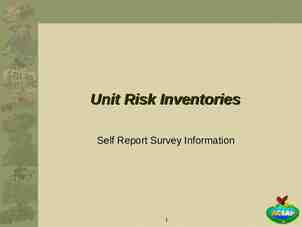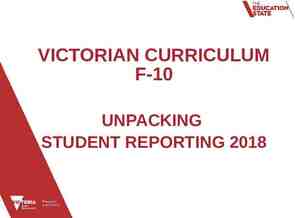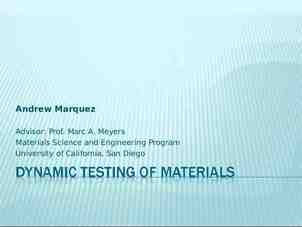ANATOMY OF A LAWSUIT PRACTICAL REALITIES OF CLINICAL TRIALS LITIGATION
20 Slides50.00 KB

ANATOMY OF A LAWSUIT PRACTICAL REALITIES OF CLINICAL TRIALS LITIGATION E. Haavi Morreim, PhD E.H.Morreim, PhD

Third National Medical Research Summit, 2003 Plot and Subplot E.H.Morreim, PhD

Background of Research AbioCor: totally implantable artificial heart Feasibility study of 15 patients Eligibility: within 30 days of death (70% likelihood) maximum medical management ineligible for heart transplantation IPAC (Independent Patient Advocacy Council) E.H.Morreim, PhD

Patient's Course 11/5/01: patient receives implant 11/01, 12/01: doing well 12/31/01: minor stroke, still doing quite well Early 2/02: returned to hospital Early 3/02: back on ventilator Spring, summer '02: efforts to get pt home Early 7/02: extubated, somewhat better 8/25/02: stroke death 8/27/02: vent, heart turned off E.H.Morreim, PhD

Quinn v. ABIOMED et al. Filed October 16, 2002 plaintiff-attorney: Alan Milstein E.H.Morreim, PhD

DEFENDANTS Drexel University (private medical school) Tenet HealthCare Corporation Hahnemann Hospital (owned by Tenet) ABIOMED, Inc. David Casarett, MD (patient advocate/PA) E.H.Morreim, PhD

Primary Allegations Breach of Informed Consent – Patient did not know device was experimental – Patients within 30 days of death are vulnerable to 'therapeutic misconception' Wrongful life Loss of consortium Product liability Fraud, negligent misrepresentation, negl/int’l infliction of emotional distress, etc E.H.Morreim, PhD

Primary Allegations, cont. Patient advocate malpractice: PA allegedly – Did nothing at the informed consent conference, other than to ask patient, family if they had questions – Failed to advise patient regarding whether it was in his best interest to participate – Failed to set up communication with the wives of the other subjects – (Etc.) E.H.Morreim, PhD

Procedural Summary October, 2001: complaint filed February 2002: Tenet, Hahnemann, Drexel settle Attorneys for ABIOMED, PA conduct informal conversations with Milstein Milstein approaches liability insurance company directly, offers to settle for small sum E.H.Morreim, PhD

Procedural Summary, cont. Liability insurance company orders defense attorneys to settle the case – No depositions, no document exchanges--no discovery undertaken By stipulation among attorneys, all claims against PA are dropped, with prejudice Total amount of settlement among 4 defendants (Tenet, Hahnemann, Drexel, ABIOMED): 125,000 E.H.Morreim, PhD

Problems with Allegations "Wrongful life" vs. "Loss of consortium” vs. final settlement stated as "Wrongful death" Patient advocate "standard" requiring PA to tell prospective research subject whether it is in his best interest to enroll Bare fact that patient was eligible for trial (within 30 days of death) patient should not enter trial E.H.Morreim, PhD

Insights, Lessons A: Plaintiff-attorney controls the public face of the suit B: Defense attorneys work under significantly, unavoidably conflicted loyalties C: It is important to read insurance contracts D: Settling cases is a troubling, albeit complex option E.H.Morreim, PhD

A. Plaintiff-attorneys control the public face of the suit Plaintiff-attorneys: – write the complaints – speak to media Defendants: – constrained by confidentiality – public statements can be misconstrued by plaintiff-attorney, thus creating hazard – settlements usually require confidentiality, so defendants' side may never come out – even plaintiff-attorney may never know the facts E.H.Morreim, PhD

B. Defense attorneys work under significantly, unavoidably conflicted loyalties Insurer retains attorney, controls defense – Like managed care: preferred attorney roster, utilization management Many attorneys regard insurer as a 'client', alongside defendant Defendant's wishes, interests, can clash with insurer's E.H.Morreim, PhD

Conflicted Loyalties, cont. Defense attorneys may not be party to coverage disputes between insurer and defendant/insured – Mission to defend insured should not be deterred by disputes between insurer and insured – Attorney must not be caught between two ‘clients’ Unlike HMO, attorney cannot plead insured’s disagreements with insurer’s constraints on defense Situation clashes with law’s usually strong proscription against conflicts of interest E.H.Morreim, PhD

C. It is important to read insurance contracts Procedural oddity: – Insurer must approve each attorney expenditure (akin to HMO arrangements, incl. 'preferred provider' list) – IPAC’s insurance policy had sizeable deductible – Attorneys routinely asked insurer for permission to spend IPAC money Procedural oddity: – insurer required settlement without consent of insured – may not have been entitled to do so E.H.Morreim, PhD

From insurance contract “We may, at our discretion, investigate any 'occurrence' and settle any claim or 'suit' that may result. But: (1) The amount we will pay for damages is limited as described in "Limits of Insurance" . ; and (2) Our right and duty to defend does not begin until the applicable limit of your self-insured retention has been used up in the loss reserves and payment of judgments, settlements and defense expense.” [emphasis added] E.H.Morreim, PhD

D. Settling cases is a troubling, albeit complex option Strong temptation to settle – Institutions: limit disclosure of sensitive details – NFP institutions: severe drop in donations 2 suit – Insurers: high costs of defending suits – Significant uncertainties in jury decisions – High cost of appealing undesirable jury verdict E.H.Morreim, PhD

D. Settling cases is a troubling, albeit complex option, cont. Problems with hasty settlements – Dishonor those who are wrongly maligned – Reward plaintiff-attorneys even for bogus cases, encourage more such suits – "In terrorem" effect on research community – Create pseudo-standards by default – Defer opportunity for courts to become clearer on the issues, provide better guidance on research-related injuries E.H.Morreim, PhD

THE ROAD AHEAD: A TWISTED PATH E.H.Morreim, PhD






